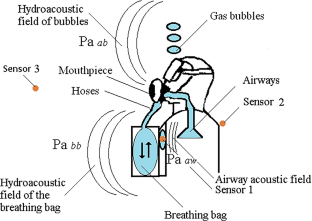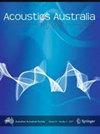Acoustic Monitoring of Diver’s Respiratory Rate by Respiratory-Associated Noise
Abstract
Monitoring the condition of divers during immersion is essential to ensuring their safety and planning permissible physical activity. Monitoring respiratory rates using a diver's respiratory sounds as parameters might be used for that purpose. This study was conducted with three types of diving apparatuses intended for civilian use: scuba, closed-circuit, and surface-supplied. Respiratory rates were investigated using wearable acoustic sensors installed in diving suit air cavities or remote hydrophones. The respiratory rate monitoring was also possible using a standard underwater voice communication system. Periodic breathing sounds are distinguishable in open-circuit scuba at a distance of 20 m, and a distance of 100–140 m with additional processing using wavelet transforms. The noise of inhalation and exhalation using closed-circuit breathing apparatus was monitored in the vicinity of the diver's respiratory tract. Respiratory sounds were distinguishable while using surface-supplied diving equipment (diver at the bottom, depth 8 m). The mean respiratory rate was 16.4 respiratory cycles per minute. The researchers could assess a diver's respiratory rate without invasive intervention in the breathing apparatus design. The data obtained were helpful for the remote monitoring of divers by the diving supervisor. Additionally, the data could be entered into a personal decompression computer for self-monitoring.


 求助内容:
求助内容: 应助结果提醒方式:
应助结果提醒方式:


